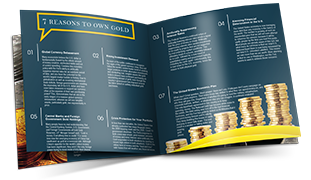 Joe Cavatoni of the World Gold Council says gold is holding steady above $3,300 as markets await stronger signals on Fed policy, dollar strength, and broader market direction. The group’s senior market strategist emphasized that central banks remain the backbone of gold demand, with over 50% planning to increase holdings in the next year. While gold’s rally has cooled, the longer-term fundamentals remain strong.
Joe Cavatoni of the World Gold Council says gold is holding steady above $3,300 as markets await stronger signals on Fed policy, dollar strength, and broader market direction. The group’s senior market strategist emphasized that central banks remain the backbone of gold demand, with over 50% planning to increase holdings in the next year. While gold’s rally has cooled, the longer-term fundamentals remain strong.
Gold Prices Stabilize Above $3,300
The gold market’s hypersensitivity to current price movements highlights the powerful momentum driving its years-long rally. Now trading just $200 below its all-time high of $3,500, gold is facing renewed scrutiny about its ability to push higher.
In a recent interview with Schwab Network, Cavatoni acknowledged the metal’s sideways trend but emphasized its resilience, pointing to gold’s firm position above $3,300, which represents a 35% year-over-year yield. The yellow metal notched most of those gains in the first half of 2025, suggesting this plateau could be short-lived.
These Triggers Could Push Prices Higher
Prices have been stubborn over the past few weeks, but the setup for a breakout might already be in motion. WGC’s Cavatoni sees three primary catalysts that could propel the metal to new highs, and many are already in play.
1. Fed Rate Cuts
Cavatoni points to Federal Reserve policy as a key short-term driver. With around 50 basis points in rate cuts expected by the end of the year, the declining opportunity cost of holding gold could support renewed upside momentum. Markets are currently pricing in the first cut as early as September, with the possibility of a second later in the year depending on economic data.
2. A Weaker Dollar
A falling dollar makes gold more attractive to global buyers, and WGC sees this as a critical tailwind. The dollar has already slid nearly 10% year-to-date, with further softness expected if the Fed turns dovish. This currency shift is lowering the barrier for a gold breakout.
3. Structural Economic Shifts
Beyond tactical moves, Cavatoni points to deeper systemic risks as long-term catalysts. The country’s national debt crossing $37 trillion, ongoing trade wars, and rising geopolitical tensions highlight gold’s role as a financial backstop.
Official Demand Remains Backbone of Gold’s Strength
Gold prices may be waiting for a fresh spark, but central bank demand remains the rally’s primary fuel. For 15 consecutive years, the official sector has been a net buyer of the yellow metal.
In recent years, that appetite has surged, with central banks purchasing over 1,000 tons annually across the past three years. At these elevated levels, governments now account for up to 25% of global gold consumption, underscoring their outsized influence on price momentum.
A recent WGC survey of nearly half the world’s central banks revealed that 95% expect physical gold to play a key role in their fiscal strategy. Half said they intend to increase their gold reserves in the year ahead. The WGC projects that official gold buying could again exceed 1,000 tons in 2025, a critical cog in the yellow metal’s whirring engine.
Gold’s Fortified Position in the Trade War
For months, the gold market has lingered in uncertainty over the metal’s role in President Trump’s aggressive trade war. So far, the administration’s sweeping import tariffs—a cornerstone of its foreign policy and economic strategy—have focused on critical minerals, leaving gold untouched.
Treated primarily as a monetary asset rather than an industrial input, gold has managed to avoid being caught in the crossfire. While Cavatoni cautions that “anything is possible” in today’s shifting political landscape, he remains confident that the yellow metal will continue to be exempt from tariff measures.
Indirectly, gold’s exemption from tariffs has highlighted the administration’s view and the economy’s treatment of the metal as a safe-haven asset. It highlights gold’s crucial role in personal savings, institutional portfolio holdings, and official reserves, distinguishing it from industrial or strategic commodities subject to trade restrictions.


